
CANADIAN JOURNAL OF CIVIL ENGINEERING
Scope & Guideline
Connecting Researchers to the Heart of Civil Engineering
Introduction
Aims and Scopes
- Structural Engineering:
Research on the design, analysis, and performance of various structural systems, including traditional and advanced materials, innovative construction techniques, and resilience against natural hazards. - Sustainable Infrastructure:
Studies exploring sustainable practices in civil engineering, including the utilization of recycled materials, energy-efficient designs, and the environmental impact of construction practices. - Transportation Engineering:
Investigations into traffic management, transportation systems, and the safety and efficiency of road networks, including the integration of advanced technologies such as AI and machine learning. - Geotechnical Engineering:
Research on soil behavior, foundation design, and the interaction between soil and structures, emphasizing the importance of geotechnical considerations in civil engineering projects. - Water Resources Engineering:
Studies focusing on the management and utilization of water resources, including hydrology, flood modeling, and the impact of climate change on water systems. - Construction Management:
Research on project management techniques, construction safety, labor productivity, and the integration of digital tools in construction processes. - Materials Science:
Exploration of advanced materials used in civil engineering, including the development and testing of concrete, asphalt, and alternative materials for improved performance and sustainability. - Environmental Engineering:
Research addressing the environmental aspects of civil engineering, including waste management, pollution control, and the impact of infrastructure on ecosystems.
Trending and Emerging
- Digital Transformation in Civil Engineering:
There is a growing emphasis on the integration of digital technologies, such as Building Information Modeling (BIM), AI, and machine learning, to enhance project efficiency, safety, and sustainability. - Climate Change Resilience:
Research focusing on the resilience of infrastructure to climate change impacts has gained momentum, addressing issues like extreme weather events, flooding, and the sustainability of materials. - Smart Transportation Systems:
The emergence of smart transportation solutions, including the use of connected and autonomous vehicles, has become a focal point, with studies examining their implications for traffic management and infrastructure. - Sustainable Materials and Recycling:
There is an increasing trend towards researching sustainable materials, including recycled aggregates and alternative binders, to minimize the environmental footprint of construction. - Health and Safety in Construction:
The importance of health and safety measures in construction practices is gaining attention, with studies aimed at improving worker safety and reducing accidents through innovative practices. - Public Engagement and Community Impact:
Research exploring the social dimensions of civil engineering, including community engagement and public perception of infrastructure projects, is emerging as a significant theme.
Declining or Waning
- Traditional Construction Methods:
Research related to conventional construction practices has diminished as the industry moves towards innovative and sustainable techniques, such as modular construction and the use of advanced materials. - Non-structural Components:
There has been a noticeable decline in studies focusing on non-structural components in civil engineering, possibly overshadowed by the growing emphasis on structural integrity and resilience. - Hydraulic Engineering:
Research specifically targeting hydraulic engineering aspects, such as traditional dam design and maintenance, has waned, likely due to increased focus on integrated water resource management and environmental impacts. - Historical Preservation Techniques:
The exploration of traditional methods for historical preservation has become less prominent, as contemporary practices focus more on sustainability and modern materials. - Manual Data Collection Techniques:
As technology advances, manual data collection methods in civil engineering studies are being replaced by automated systems and digital tools, leading to a decline in related research.
Similar Journals
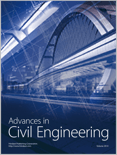
Advances in Civil Engineering
Pioneering Solutions for Sustainable DevelopmentAdvances in Civil Engineering is a leading peer-reviewed journal published by HINDAWI LTD, dedicated to advancing knowledge and innovation in the field of civil and structural engineering. Holding an esteemed Q2 ranking in the 2023 category for Civil and Structural Engineering, this journal serves as a vital platform for disseminating cutting-edge research and practical applications that address contemporary challenges in infrastructure development, sustainable design, and material science. Launched in 2008 and operating as an Open Access journal since 2009, it promotes the free exchange of ideas by ensuring that all articles are accessible to researchers, professionals, and students globally. The journal is also indexed in Scopus, ranking at #142 out of 379 in its category, situating it within the 62nd percentile of its peers. With a focus on interdisciplinary collaboration and innovative solutions, Advances in Civil Engineering contributes significantly to the ongoing evolution of engineering practices and education, making it an essential resource for anyone involved in or studying the ever-evolving field of civil engineering.
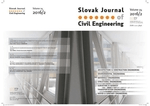
Slovak Journal of Civil Engineering
Exploring groundbreaking solutions in civil engineering.Welcome to the Slovak Journal of Civil Engineering, a premier open-access publication dedicated to advancing the field of civil engineering. Published by SCIENDO, this journal has been providing a platform for the dissemination of groundbreaking research since 2010, ensuring that all articles are freely accessible to a global audience. With a commitment to promoting innovation and excellence within civil engineering, the journal covers a wide range of topics, including structural engineering, transportation systems, geotechnics, and environmental engineering. The Slovak Journal of Civil Engineering is designed to engage a diverse community of researchers, professionals, and students, fostering collaboration and knowledge-sharing to address contemporary challenges in the field. With its open-access model, the journal not only enhances visibility for authors but also ensures that the latest findings and methodologies reach practitioners and academics alike, making it an essential resource for anyone interested in civil engineering advancements. Stay connected with the evolving landscape of civil engineering through this influential publication.
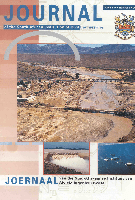
Journal of the South African Institution of Civil Engineering
Advancing civil engineering through open dialogue.Journal of the South African Institution of Civil Engineering (ISSN: 1021-2019) is a distinguished open-access publication dedicated to advancing the field of civil engineering in South Africa and beyond. Established by the South African Institution of Civil Engineering (SAICE) and South African Institute of Steel Construction (SAISI), it serves as a critical platform for sharing research, case studies, and industry developments. The journal has been openly accessible since 2015, ensuring broader dissemination of knowledge among researchers, professionals, and students alike. Although it currently holds a Q4 ranking in Civil and Structural Engineering and is positioned within the lower percentiles in Scopus rankings, its commitment to fostering growth in the engineering sector remains strong. Covering various topics from structural design to innovative construction methodologies, the journal invites contributions that push the boundaries of current practices and methodologies. This publication is essential for those invested in sustainable engineering solutions, aiming to collaborate and contribute towards the evolution of civil engineering standards in South Africa.
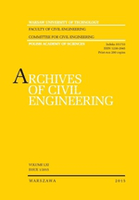
Archives of Civil Engineering
Bridging Theory and Practice in Civil EngineeringArchives of Civil Engineering is a premier academic journal published by POLISH ACAD SCIENCES, dedicated to advancing the field of civil and structural engineering. Established in 1996, this open-access journal has been pivotal in disseminating high-quality research and innovation in engineering practices, particularly since adopting open access in 2010. With an ISSN of 1230-2945 and E-ISSN of 2300-3103, it enjoys a notable reputation, currently ranked in Q3 of the Civil and Structural Engineering category for 2023, reflecting its considerable contribution to scholarly content in the discipline. The journal caters to a diverse audience of researchers, professionals, and students, providing them with a platform to share and access essential findings. Its commitment to high academic standards is underscored by its ranking in Scopus, where it stands at Rank #265/379. Located in Warsaw, Poland, the journal aims to promote international collaboration and foster knowledge exchange in civil engineering, making it an indispensable resource for anyone involved in this dynamic field.
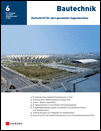
Bautechnik
Elevating standards in building and civil engineering scholarship.Bautechnik is a premier academic journal in the fields of Building and Construction and Civil and Structural Engineering, published by ERNST & SOHN in Germany. With a history dating back to 1969 and a significant converged timeline through various years, this journal offers a rich repository of peer-reviewed research dedicated to advancing the principles, methodologies, and innovations within its domains. Bautechnik is currently ranked in the Q3 category for both building and construction, as well as civil and structural engineering, indicating its relevance and contribution to the academic community. Though it does not offer open access, its curated content is accessible to a global audience of researchers, professionals, and students striving for excellence in their fields. The journal aims to foster discussions and disseminate knowledge that impacts the future of construction, architecture, and engineering practices.

CIVIL ENGINEERING
Bridging Knowledge and Practice in Civil EngineeringCIVIL ENGINEERING is a prominent journal published by the American Society of Civil Engineers (ASCE), dedicated to advancing the field of civil engineering since its inception in 1969. With an ISSN of 0885-7024, this journal spans a wide range of topics, including civil and structural engineering, geotechnical engineering, and materials science, reflecting its comprehensive coverage of the discipline. Although currently categorized in the Q4 quartile for several fields, the journal provides a platform for researchers, professionals, and students to present innovative solutions and research findings that push the boundaries of civil engineering practices. While it does not offer open-access options, its accessibility through institutional subscriptions ensures that critical research remains within reach for those intent on furthering their understanding and applications in the field. Conference proceeding articles, case studies, and theoretical papers contribute to its mission of fostering communication and knowledge exchange among civil engineering practitioners and scholars. The journal's commitment to quality and relevance in today's evolving engineering landscape makes it an essential resource for informed decision-making and professional development.
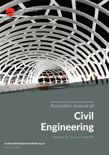
Australian Journal of Civil Engineering
Bridging Theory and Practice in Structural EngineeringThe Australian Journal of Civil Engineering, published by Taylor & Francis Ltd, stands as a pivotal platform within the field of civil and structural engineering. With an ISSN of 1448-8353 and an E-ISSN of 2204-2245, this journal consistently delivers high-quality research and innovative practices from both established and emerging scholars in the discipline. Recognized in the Q2 category for Civil and Structural Engineering in 2023, it holds a respectable position, ranking 146 out of 379 within its field according to Scopus, which places it in the 61st percentile. Converging valuable insights from 2011 through 2024, the journal encompasses a broad scope of topics, including sustainable infrastructure, innovative materials, and advanced construction techniques, thereby addressing contemporary challenges faced by engineering professionals. Though it is a traditional publication without open access options, the quality of the research featured ensures that it remains an essential resource for academics, practitioners, and students striving to enhance their knowledge and contribute to the dynamic field of civil engineering.
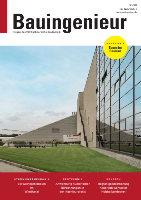
Bauingenieur
Bridging Theory and Practice in Engineering DiscoursesBauingenieur, an established journal in the field of Building and Construction and Civil and Structural Engineering, has been a significant platform for scholarly discourse since its inception in 1969. Published by VDI FACHMEDIEN GMBH & CO KG UNTERNEHMEN FACHINFORMATIONEN in Germany, this journal, available in both print (ISSN: 0005-6650) and electronic formats (E-ISSN: 1436-4867), serves as a vital resource for researchers, professionals, and students dedicated to advancing knowledge and practice in engineering. Although currently without open access options, Bauingenieur aspires to contribute to the academic community by presenting cutting-edge research, case studies, and technical reviews within the realms of construction and civil engineering. As evidenced by its categorizations in the 2023 Scopus rankings, where it has a Q4 designation in both relevant categories, it provides an essential resource for understanding current trends and challenges in the industry. The journal welcomes contributions that push the boundaries of knowledge and foster innovative solutions in the built environment.
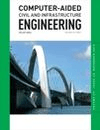
COMPUTER-AIDED CIVIL AND INFRASTRUCTURE ENGINEERING
Redefining Infrastructure through Innovative ResearchCOMPUTER-AIDED CIVIL AND INFRASTRUCTURE ENGINEERING, published by WILEY, stands as a leading journal in the domains of civil and structural engineering, computational theory, and computer-aided design since its inception in 1986. With an impressive ISSN of 1093-9687 and E-ISSN of 1467-8667, this esteemed UK-based journal holds a prestigious position in the academic community, reflected by its Q1 ranking in numerous relevant categories, including Civil and Structural Engineering and Computer Graphics as of 2023. The journal is renowned for promoting innovative research that utilizes computational techniques to solve complex engineering problems, making it an essential resource for researchers, professionals, and students alike. Despite its lack of open access options, the journal garners significant interest due to its rigorous peer-review process and high-impact articles, underlining its importance in the advancement of infrastructure engineering practices and technologies. With a Scopus ranking placing it among the top journals in various engineering and computer science fields, COMPUTER-AIDED CIVIL AND INFRASTRUCTURE ENGINEERING continues to foster knowledge and collaboration, ultimately contributing to the future of smart and resilient infrastructure development.
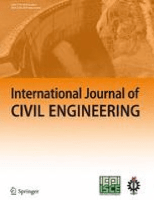
International Journal of Civil Engineering
Exploring Innovations in Structural and Geotechnical EngineeringThe International Journal of Civil Engineering, published by Springer International Publishing AG, is a premier platform dedicated to advancing the field of civil engineering. With a notable impact factor and a strong reputation reflected in its Q2 quartile rankings in both Civil and Structural Engineering as well as Geotechnical Engineering and Engineering Geology, this journal facilitates the dissemination of high-quality research from 2009 through 2024. Researchers and professionals can access cutting-edge studies and innovative practices that address contemporary challenges in civil engineering, such as sustainable infrastructure development, environmental impacts, and advanced material technologies. Situated in Switzerland, the International Journal of Civil Engineering emphasizes the critical interplay between theory and application, making it an essential resource for students, academics, and industry leaders seeking to stay at the forefront of their disciplines.